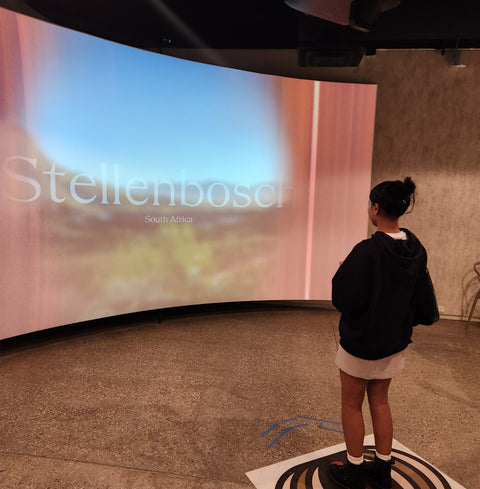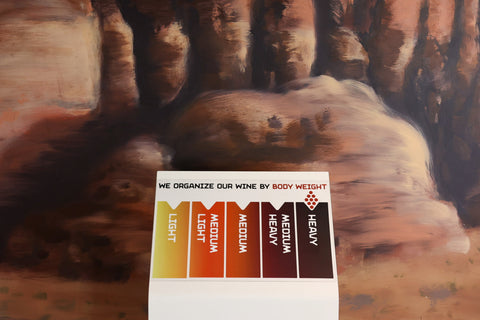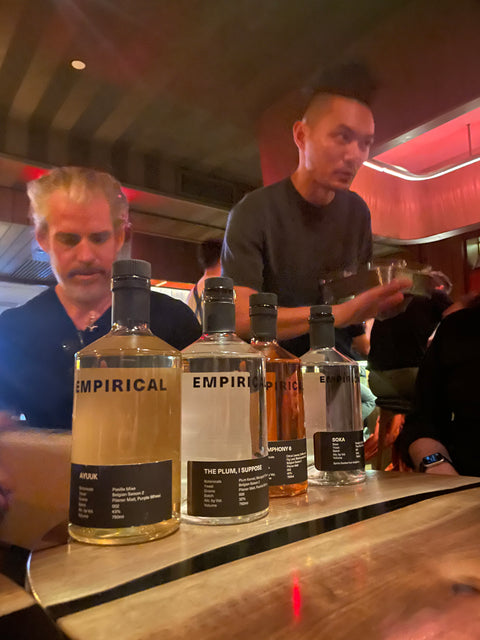Our founder, David Weitzenhoffer, writes about why we went all in on an interactive experience at Community.
When I decided I wanted to open a brick-and-mortar store in 2021, it drew a lot of raised eyebrows from friends and wine-industry colleagues. Online sales had soared the previous year and a half, and physical locations had been hobbled. I thought a lot about shifts in consumer shopping behavior. Before the global pandemic, the buzzword for successful retail was “experiential,” meaning that if a store created experiences, not shopping opportunities, younger shoppers would more readily participate in the retail endeavors, but experiential shopping faded during the pandemic, and I was fascinated by what the next phase of retail would be.
What really resonated with me was building an “interactive” shopping experience, but as I surveyed the retail landscape, I found that many “interactive” shopping experiences were actually passive. My team visited retailers with spectacular merchandising carve-outs to bring you to the world of their products, but the experience ended there. There was no further interaction beyond an iPad with a play button and good video editing. It seemed that this was the bar for “interactive.”
So, our first task was to define what interactive would mean for Community Wine and Spirits. We worked backward from the outcomes that interactive experiences, merchandising, and wayfinding could create in a shopping space to define why we wanted to use them in our store.
Our three outcomes were:
-To create product lift
-To change or influence consumer behavior
-To provide an entertaining or whimsical moment that is unique in the Wine and Spirits industry
By combining smaller interactive experiences throughout the store, we would shape the consumer’s overall experience and project our personality, building loyalty and allowing our shoppers to make more informed shopping decisions with minimal friction.

We began to explore existing interactive technologies. One was built by Perch Interactive (now owned by Raydiant Technologies) that was designed to get a product in the hands of consumers, a user action that Perch claims raises the likelihood of a sale. This interesting bit of technology helped to increase consumer confidence by showing the application of a product via a front-facing camera and screen. If you sold lipstick or eyeshadow, for instance, a client picking up a certain color would see their face with the makeup applied in real-time—now they are an informed consumer with the confidence to buy the product they are already holding.
Another piece of technology we considered was adapting a project I had worked on in 2017 while running the Penrose Hill / Firstleaf trade division that layered augmented reality onto wine labels. This technology animated the labels and provided a platform to give the customer a rebate, sign them up for other offers or a newsletter, make a donation to charity, among many more applications…the possibilities may not have been limitless, but it still pushed the boundaries of what was being done at the time.
Like the technology from Perch, this application was driven by user interaction. Both of these technologies were truly interactive, but, in my mind, their application to wine retail was less easily defined.
Ultimately, we hired a design firm, Potion (now owned by Hyperquake Technologies), specializing in interactive digital design, primarily in larger brand activations and museum exhibits. Our challenge was to help Potion see the application of interactive visual design in a retail setting and then hone the concepts to work with our three guiding outcomes.
We worked with a brilliant young creative director and designer, Oscar Ma, who helped us produce an immersive and interactive installation that we call The Looking Glass. This installation is our way of transporting customers from NYC to far-flung wine regions where they can explore environments (using imagery we produce in-house), interact with elements we designed that provide more information about the region, and even take them back to our shelves or our website to buy wines from that country or location.

To extend the experience across the entire store, we worked with one of Potion’s lead designers on the second interactive activation: The Looking Glass Cubed. We sourced three large digital video cubes that display digital artwork from local artists, which users can also control through a QR code to continue the Looking Glass experience in another format.
We are located in Chelsea, right in the heart of the gallery district. Hence, an art-forward component that bridges the gap between interactive shopping and the art world is an important piece of the Community experience.
Beyond the tech-driven interactive components we have incorporated other art into our shop that gives life to the space. We have sculptures and artwork that explore some of the major themes behind what we do. A sculpture of Nicolas Cage’s nose made by artists from Red Hook’s Hot Wood Arts links to videos explaining its relevance in enjoying (and shopping for) wine and mixed-media artwork from Chelsea Maria Bizub that visually represents our unique wine body weight organization system—one of the most crucial elements of our interactive shopping experience.

We reimagined how to organize the wine on our shelves—instead of dividing them by region or grape, we merchandise them by body weight, creating a much more intuitive system that tells the shoppers something about what they are looking for. By organizing this way, customers will always know at least one thing about the wine they pick up on our shelves. These sections contract and expand with the seasons, giving a living feeling to the shelves that allows us and our customers to feel like it’s easy to discover something new because there is always something new to find.
Beyond all of this, our staff provides active, hands-on assistance, a hospitality-driven take on wine retail that often features guidance through tastings, classes, events, and shelf-talkers.
Stores that don’t provide stimulating shopping experiences will lose customers to the stores that offer informative, interactive shopping. Those businesses that have reimagined the in-store customer journey offer a clear alternative to more traditional shopping experiences and to online shopping. By enabling an interactive shopping experience, Community Wine and Spirits engages our customers, makes them feel more informed, and provides a personalized approach. This is what makes Community Wine and Spirits Interactive, Experiential, and most importantly, fun.


